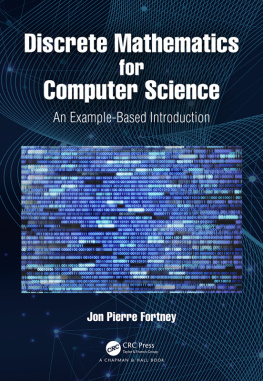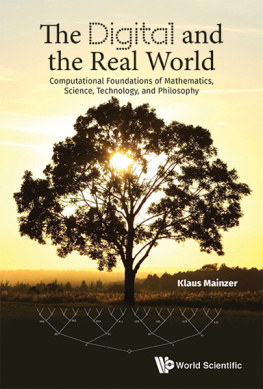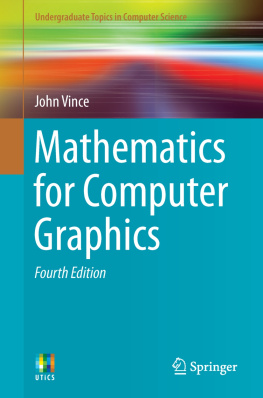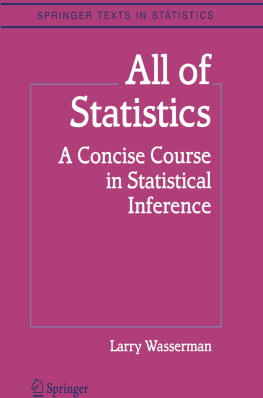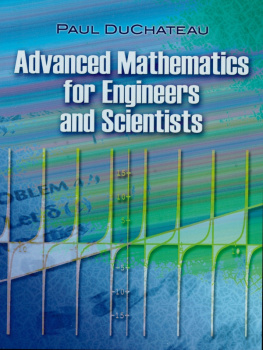Mark Lemmon Close - Mathematics for Computer Scientists
Here you can read online Mark Lemmon Close - Mathematics for Computer Scientists full text of the book (entire story) in english for free. Download pdf and epub, get meaning, cover and reviews about this ebook. year: 2021, publisher: UNKNOWN, genre: Children. Description of the work, (preface) as well as reviews are available. Best literature library LitArk.com created for fans of good reading and offers a wide selection of genres:
Romance novel
Science fiction
Adventure
Detective
Science
History
Home and family
Prose
Art
Politics
Computer
Non-fiction
Religion
Business
Children
Humor
Choose a favorite category and find really read worthwhile books. Enjoy immersion in the world of imagination, feel the emotions of the characters or learn something new for yourself, make an fascinating discovery.

- Book:Mathematics for Computer Scientists
- Author:
- Publisher:UNKNOWN
- Genre:
- Year:2021
- Rating:4 / 5
- Favourites:Add to favourites
- Your mark:
- 80
- 1
- 2
- 3
- 4
- 5
Mathematics for Computer Scientists: summary, description and annotation
We offer to read an annotation, description, summary or preface (depends on what the author of the book "Mathematics for Computer Scientists" wrote himself). If you haven't found the necessary information about the book — write in the comments, we will try to find it.
Mathematics for Computer Scientists — read online for free the complete book (whole text) full work
Below is the text of the book, divided by pages. System saving the place of the last page read, allows you to conveniently read the book "Mathematics for Computer Scientists" online for free, without having to search again every time where you left off. Put a bookmark, and you can go to the page where you finished reading at any time.
Font size:
Interval:
Bookmark:
2014 Gareth J. Janacek, Mark Lemmon Close & Ventus Publishing ApS ISBN 978-87-7681-426-7
1,2,3,4,...,101,102, ...,n,...,2 32582657 1,...,
0+ any integer n = 0+ n = n+ 0 = n
the number which when added to n gives zero, so n+ (n)=(n)+ n = 0.
You are probably used to arithmetic with integers which follows simple rules. To be on the safe side we itemize them, so for integers a and b
2. a b = b a or ab = ba
3. a b =ab
3
= 3 3 3 3 and 2 = 1024. Note a n a m = a n+m
6. Do note that n=1.
Factors and Primes
are known as primes. Primes have long fascinated mathematicians and others see
and there is a considerable industry looking for primes and fast ways of factorizing integers.
b = k a+ r
9
2. 1197/3=399
2 3 3 7 19
Modular arithmetic
The mod operator you meet in computer languages simply gives the remainder operator you meet in computer languages simply gives the remainderafter division. For example,
1. 25 mod 4= 1 because 25 4= 6 remainder 1.
4= 1 because 25
2. mod 5= 4 since 19 = 6 remainder 1. 19= 3 5+ 4 .
5= 4 since 19= 3 5 + 4 .
3. 24 mod 5= 4.
5= 4. 4. 99 mod 11= 0.
=
4
mod
4
27 0
and 21=mod 7 = 7. which just means 24 mod 5=
or mod
is a complex example so take a simpler version. Four people sit around a table and we label their positions 1 to 4. We have a Four people sit around a table and we label their positions 1 to 4. We have apointer point to position 1 which we spin. Suppose it spins 11 and three quarters pointer point to position 1 which we spin. Suppose it spins 11 and three quartersor 47 quarters. The it is pointing at 47 mod 4 or 3.
1
6
4 K 2 4 K 2
3 3
The Euclidean algorithm
Suppose a is an integer smaller than b.
The algorithm is illustrated by the following example. Consider 72 and 246.
1. 246= 3 72+ 30 or 246 mod 72= 30
2. 72= 2 30+ 12 or 72 mod 30= 12
3. 30= 2 12+ 6 or 30 mod 12= 6
4. 12= 2 6+ 0
There are several websites that oer Java applications using this algorithm, we give a Python function
""" the euclidean algorithm """
if b == 0:
else:
return gcd(b, (a%b))
Font size:
Interval:
Bookmark:
Similar books «Mathematics for Computer Scientists»
Look at similar books to Mathematics for Computer Scientists. We have selected literature similar in name and meaning in the hope of providing readers with more options to find new, interesting, not yet read works.
Discussion, reviews of the book Mathematics for Computer Scientists and just readers' own opinions. Leave your comments, write what you think about the work, its meaning or the main characters. Specify what exactly you liked and what you didn't like, and why you think so.

